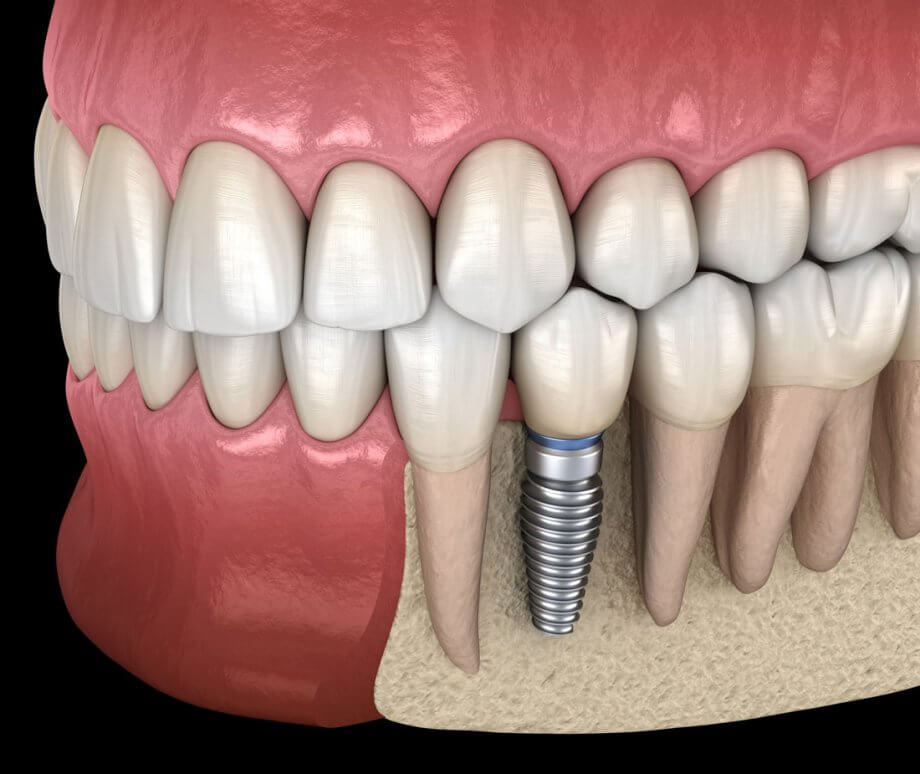Dental implants require a significant financial investment, but they also require a time investment and patience. There are some types of dental implant restorations that can be performed in a single day, but for traditional dental implants, the process typically takes months. If you’re wondering if it’s worth it, the answer is: absolutely! Dental implants take time because they’re a replacement for missing and compromised teeth that’s designed to last a lifetime.
Here’s a step-by-step guide to dental implants.
First Appointment
When you come to our office for a consultation, one of our doctors will examine your teeth and gums, discuss your dental and medical history, and listen to what your goals are for your treatment. With this information, we can provide you with your options for dental implants and other restorations.
Assuming you decide to move forward with the dental implant process, we will take digital impressions and radiographs to help us plan the placements of your implants and to assess the health of your jawbone and your teeth below the gum line. With your impressions, we can create a model of your teeth and jaw, allowing us to give you a preview of what your smile will look like once you’re finished with the dental implant process.
Supplementary Procedures
One of the other purposes of our consultation with you is to determine whether any supplementary procedures are needed prior to your dental implant surgery. If you’ve lost your teeth due to gum disease, we’ll want to make sure your gums are healthy before we move forward with implants; if your implants are replacing teeth that haven’t yet been taken out, they will need to be extracted.
Often when a patient has been missing teeth for some time, the bone in the jaw begins to break down through a process called resorption. Adequate bone mass is important for successful dental implant placement, so if we see that you’ve lost bone density in the jaw, you’ll need a sinus lift or bone grafting to give your implants the support they need.
Dental Implant Placement
If you have supplemental procedures, we’ll wait for those to heal and then you’ll be ready for the next step in the process: dental implant surgery.
During this procedure, your dental implants—the biocompatible metal posts that replace the roots of your teeth—are implanted into the jaw through a small incision in the gum tissue. You won’t feel any discomfort because you’ll be given local anesthetic injections to numb the area and, if needed, you may also be provided with sedation.
The most important step in the dental implant process comes next—and it doesn’t even happen in our office! Over the next several months, the dental implant posts and your jawbone will fuse together through a process called osseointegration. Once the two have fused, you’ll have a stable base for your restorations.
Abutment Placement
After osseointegration has occurred, you’ll come back to our office to have the abutments placed. These are the pieces that connect your dental implants with your restorations. If the tooth (or teeth) being replaced is visible when you smile, we can provide you with a temporary restoration while your permanent one is being fabricated to close the gap.
Restoration Placement
Another set of impressions is taken, which is what we use to create a restoration that fits onto your abutments and interacts properly with adjacent teeth. Your restoration could be a dental crown, bridge, full denture, or partial denture, depending on your needs. Once the restoration is ready, it will be affixed to your dental implants and the process is complete. You’ll leave our office with a Bella smile!
Learn More About Dental Implants
If you’d like to find out how we can create a beautiful smile for you, contact us today to schedule a consultation at one of our three convenient locations.

